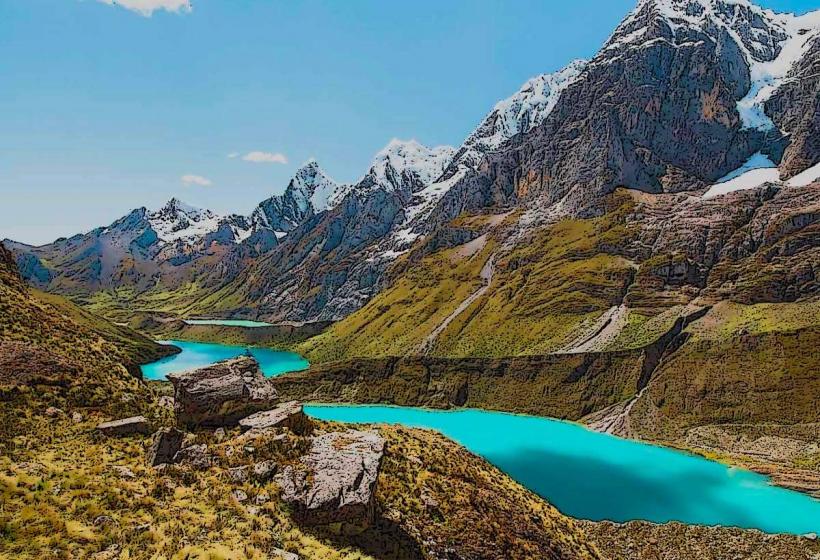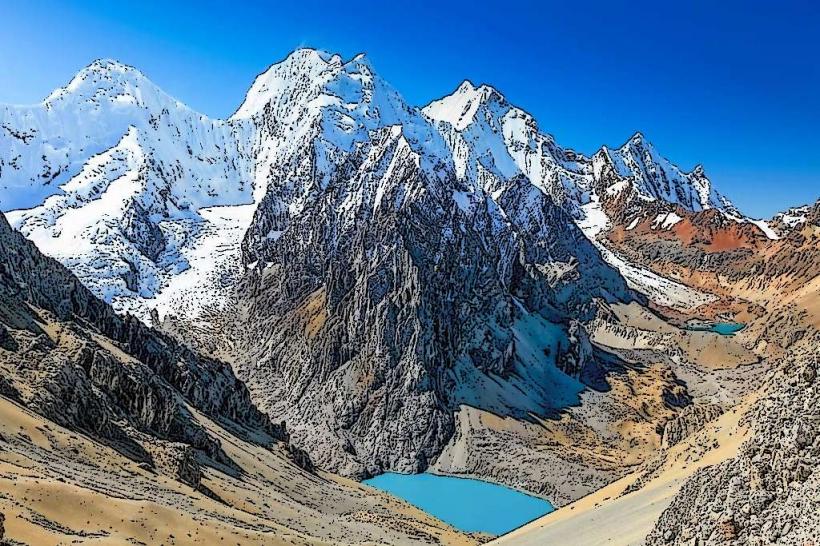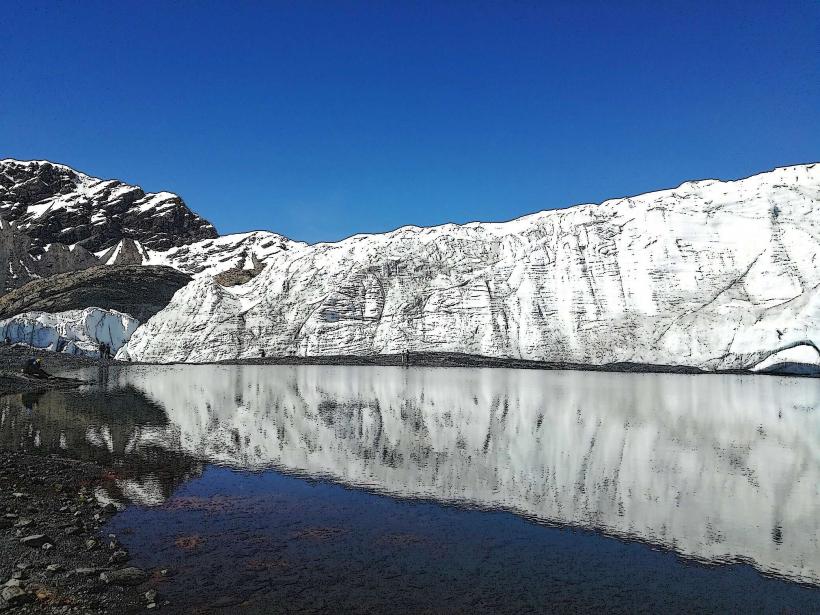Information
Landmark: Chavín de HuantarCity: Huaraz
Country: Peru
Continent: South America
Chavín de Huantar, Huaraz, Peru, South America
Overview
High in Peru’s Ancash Region, tucked deep in the Andes, Chavín de Huántar stands as one of the country’s most pivotal-and most mysterious-archaeological sites, furthermore it stood at the heart of the Chavín culture, which thrived from roughly 900 to 200 BCE and ranks among the earliest, most influential civilizations in ancient Peru.People understand the site for its striking architecture, one-of-a-kind artwork, and its long history as a hub of faith and culture, where carved stone arches still catch the afternoon light, as a result uNESCO named it a World Heritage Site in 1985 for its rich history and cultural significance, from its weathered stone walls to the stories they still seem to whisper.Chavín de Huántar sits 3,180 meters-about 10,433 feet-above sea level, tucked into a quiet valley where the Mosna and Huarme rivers meet, at the same time about 200 kilometers (124 miles) north of Lima, Peru’s capital, the site lies within reach of Huaraz, a town in the green Callejón de Huaylas valley, and you can get there by road.It’s about a three- to four-hour drive from Huaraz to Chavín de Huántar, winding past sharp mountain ridges dusted with snow, meanwhile the Chavín culture, one of Peru’s earliest pre-Columbian civilizations, laid much of the groundwork for Andean history.Historians believe the Chavín built a powerful blend of religion and politics that shaped later Andean civilizations like the Nazca, Moche, and Inca, along with at its heart stood Chavín de Huántar, a stone temple complex that drew pilgrims from across the mountains to pray, leave offerings, and ask the gods for guidance.It was key to spreading the Chavín style in art, architecture, and religion throughout the Andean highlands, and Chavín de Huántar stands out for its bold design-towering stone walls, shadowy underground passages, and intricate carvings cut clean into the rock, after that what stands out most about the site is its intricate layout, with winding paths that lead to temples, broad plazas, and quiet ceremonial spaces.Chavín art bursts with symbolic imagery, often featuring fierce jaguars, sinuous serpents, and eagles poised mid-flight, and at Chavín de Huántar, the stelae and sculptures burst with finely carved images of gods and mythic beings, their faces twisting in patterns as sharp as a blade’s edge.The site’s most famous figure is the Staff God, a humanlike deity shown clutching a staff wrapped with twisting snakes, as a result at its heart stands the Main Temple-also called the vintage Temple-a massive stone structure that anchors Chavín de Huántar.The building rises in several tiers, each made from massive stone blocks that feel cool and rough under your palm, moreover the site includes winding corridors, quiet chambers, and wide open areas where ceremonies once took region.It appears, Beneath the Main Temple, shadowy passageways twist underground, likely used for ancient rituals, then the most well-known is the Galería Subterránea, an underground passage that houses the Lanzón Monolith-a towering stone carving of a deity, its surface worn smooth by centuries in the dim light of the Main Temple.As it happens, It shows a deity with jaguar-like features twisted into a fierce snarl, and it stands among the most iconic images of the Chavín culture, simultaneously many believe the Lanzón stood at the heart of Chavín de Huántar’s religious rites, a towering stone carved with fierce, fanged faces.The figure embodies dualism, showing both human and animal traits, then just beyond the Main Temple, the wide, stone-lined Circular Plaza opens up-a space once alive with ceremonies and the murmur of gathered voices.Stone walls ring the plaza, a locale once believed to host ritual sacrifices and major public gatherings, likewise nearby stands the Tello Obelisk, a massive carved monument etched with deities and twisting animal shapes worn smooth by centuries of wind.From what I can see, This striking piece of Chavín art likely played a role in sacred ceremonies, perhaps echoing under torchlight, in turn just as captivating are the site’s unusual acoustics, where a single clap can ripple through the stone corridors.The underground galleries and chambers were built to carry sound, turning a single clap into a rolling echo that likely shaped the site’s rituals and ceremonies, besides they may have paired sound with visual symbols to draw participants into a trance-like state, deepening the spiritual experience-like a languid drumbeat echoing in the dusky.The Wall of the Lanzón stands out as another striking feature of the site, equally important the stone wall is finely crafted, its surface alive with carved faces, prowling animals, and sharp-edged geometric designs.Oddly enough, This wall likely stood behind the Lanzón Monolith, framing it during sacred ceremonies where incense curled into the air, simultaneously chavín de Huántar was a powerful religious hub, central to Andean spiritual life in ways that shaped the entire region.Pilgrims came from far corners of Peru to join ceremonies that likely included offerings laid on stone altars, animal sacrifices, and shaman-led rites, in addition carvings of the staff god, jaguar, and serpent scattered across the site hint at the Chavín’s intricate pantheon of deities ruling over nature and human affairs.At Chavín de Huántar, rituals may have blended psychoactive plants with echoing, drum-filled ceremonies meant to stir visions or a sense of the divine, but by about 200 BCE, as the Chavín culture waned, the site itself began to fade, therefore it may have happened because of shifting environmental forces-cooler winters, perhaps, or a failing political order-along with invasions from nearby cultures, to some extent In a way, After the fall, the region lay mostly empty, its once-bustling streets growing quiet and forgotten, to boot the Inca Empire later rediscovered it, treating it as a sacred spot where they likely held rituals by torchlight.Today, Chavín de Huántar draws travelers fascinated by archaeology, Andean culture, and ancient history, while the site remains in remarkable condition, inviting visitors to wander through the main temple, descend into shadowed underground galleries, and stroll across wide stone plazas.Just so you know, Just down the road, the Chavín de Huántar Archaeological Museum offers pottery, intricate carvings, and worn stone tools that bring the Chavín people’s daily lives and beliefs into sharper focus, alternatively chavín de Huántar stands as one of the most captivating and crucial sites for understanding Andean prehistory.With its intricate design, vivid carvings, and deep spiritual meaning, it stands as a striking testament to the Chavín civilization’s achievements, like stone walls whispering stories from centuries past, also the site reveals rich details about the spiritual rituals, intricate art, and social order of one of Peru’s earliest and most influential cultures, from painted ceramics to sacred gathering halls.Visiting Chavín de Huántar feels like stepping into the past, where stone corridors echo with the whispers of ancient priests.
Author: Tourist Landmarks
Date: 2025-09-13





